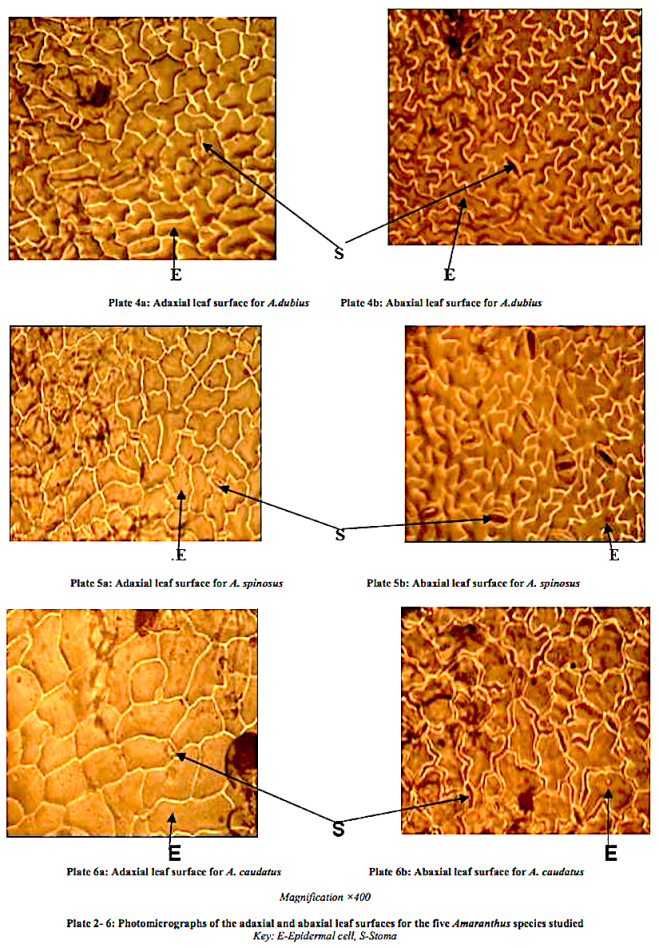
A comparative foliar epidermal and morphological study of five species of the genus Amaranthus
by Alege G. O., Daudu S. M. (2014)
Biological Sciences Dept., Kogi State University, Anyigba, Kogi State, Nigeria

in European Journal of Experimental Biology 4(4): 1-8 – ISSN: 2248 –9215 –
ABSTRACT
A comparative foliar epidermal and morphological study of five members of the genus Amaranthus was carried out with a view to elucidating their taxonomic significance in the proper identification of five different species studied.
Seeds of five species of Amaranthus namely; A. hybridus, A. caudatus, A.viridis, A. spinosus and A. dubius were harvested from different part of Anyigba and grown under the same environmental condition at the research garden of the Biological Sciences Department, Kogi State University, Anyigba, Kogi State, Nigeria.
Strips of epidermal layers were gotten from the adaxial and abaxial surfaces of the leaves and viewed under the microscope according to method outlined by [13]. The number, length and breadth of the stomata and epidermal cells were taken for both adaxial and abaxial surfaces. Seven qualitative morphological attributes and twelve leaf epidermal attributes were considered.
The data obtained were subjected to Analysis of Variance (ANOVA) while leaf epidermal traits with significant difference were separated using Duncan Multiple Range Test (DMRT).
Six out of the seven qualitative morphological attributes differentiated the five studied plants while, eleven out of the twelve leaf epidermal attributes studied showed significant difference.
The important morphological and leaf epidermal traits were then used to construct indented dichotomous keys for easy identification of the studied plants species. Further studies on the other members of the genus are therefore recommended.